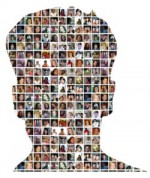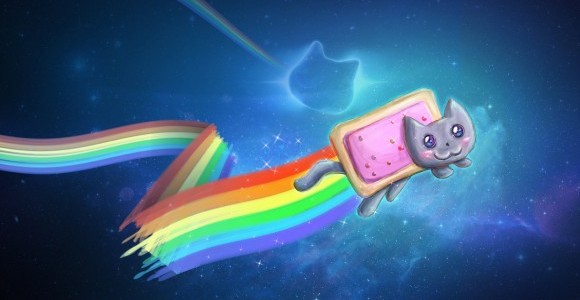 Yesterday’s post about artistic collaboration with social media led to some interesting commentary. I awoke to an email from one of my friends who had read my post. An artist himself, this chap has offered me some fascinating insights into the creative process and artistic collaboration, although, ironically, he does not use social media.
Yesterday’s post about artistic collaboration with social media led to some interesting commentary. I awoke to an email from one of my friends who had read my post. An artist himself, this chap has offered me some fascinating insights into the creative process and artistic collaboration, although, ironically, he does not use social media.
In his email, he wrote:
“Hi. So I read your recent post and listened to the original and remixed version of your music. When you mentioned remixing a remix, this came to mind. it’s pretty interesting.”
Interesting may be the understatement of the century. If you don’t have time to watch the whole thing right now (which I highly suggest that you do the moment you have thirty minutes to spare), here is my interpretation of the argument.
Culturally, we think that creativity is done on the part of the individual, and that history is a short list of geniuses. These people, through sheer force of will and divine gifts, craft the future of the world, while the rest of us sit on the sidelines and gape at their brilliance. While this makes for an easily digestible history, nothing could be further from the truth. All creation and innovation is some combination of copying, transforming, or combining older ideas. In truth, creativity is less on the part of the individual than it is a fundamental aspect of being for all living things. Innovation and progress is like intellectual evolution, with a dab of intelligent design from every person who touches the idea.
I love this concept of creativity. With this worldview, creativity becomes the central tenant of the human experience. We are tasked with consuming everything around us, and pushing it a step forward. It becomes as fundamental to us as breathing or the need for companionship.
I see a lot of evidence around us that we are moving towards a more collective form of expression. The internet, with it’s memes and humor, is not so much the work of one person, but the work of a community. Even though one person at first created Nyan Cat, the reason it is funny is because of the viral cascade of creative spin-offs, all “remixes” of the original concept.
Ideas, like the internet, are a stage where the actors and actresses of the present day play out their theatrics. Ideas are props in the drama of life, and their use and implementation are the birthright of every human being. Perhaps that is what the “being” in that title actually is referring to.
So what’s next? I say let’s try to find a way to better harness this tool of international self-expression that is the internet. Let’s build it into something that further shatters the notion that ideas and history are the exclusive domain of the illuminated few. What about something that allowed you to play music with someone on the other side of the world? What if a performance used samples and melodies sent live from the audience to the performer? What if a concert used the footage of the crowd and found a way to “perform” the footage, making all people involved both performer and audience? The only limitation is our breadth of imagination.
As long as you can hold an idea in your mind’s eye, shift it and change it, there is nothing holding you back from taking part in the intelligent design of our creative evolution. The only question is what will your Nyan Cat look like?
![]() Mr. David Benson is a social media analyst and coffeephile. He currently lives in New York City and works as an analyst for Mashwork, a social media analytics company.
Mr. David Benson is a social media analyst and coffeephile. He currently lives in New York City and works as an analyst for Mashwork, a social media analytics company.









27. July 2012 at 4:20 pm
I think that art is more than remixing, or cutting and pasting. Now maybe the concept of “remixing” is one that I’m not fully up on, that could certainly be the case. But I think that the development of art has more to do with the inclusion of something that hasn’t been thought of as “art” before, and it does involve innovation and makes you look at the whole art form as something different and new. In drama terms, it’s the first time that one actor steps forward from a Greek chorus and speaks alone, saying, “This can be theater, too.” Or a musician saying that silence is also a part of a soundscape. Or an artist not painting representational art, saying these random colors are art, too. Performance art, found poetry, women portraying women’s roles in the 17th century – these are examples of what opens our mind to what we can say and how we can say it that make new art and make new meaning. I think it’s the idea of something new coming into the mix that no one’s thought of before that keeps art alive.